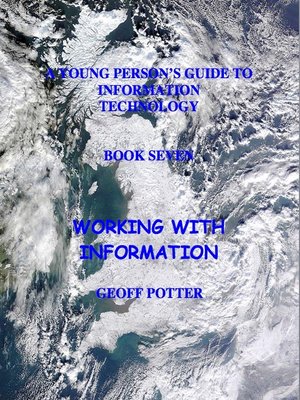
Sign up to save your library
With an OverDrive account, you can save your favorite libraries for at-a-glance information about availability. Find out more about OverDrive accounts.
Find this title in Libby, the library reading app by OverDrive.



Search for a digital library with this title
Title found at these libraries:
| Library Name | Distance |
|---|---|
| Loading... |
This is the seventh book in a series of ten electronic books designed to educate young children and school-age students about information technologies and the digital world they live in.
Who will benefit from this book?
This book is most suitable for students in their fifth, sixth or seventh grade level at school.
For students with little or no prior knowledge of ICT and computing, it is effective when used in conjunction with Books Five, Six and Eight.
It may also be helpful for teachers introducing ICT or integrating it into the curriculum.
Contents:
Book Seven comprises five modules:
Module 1: Exploring Information Technologies
This module enables the student to explore the nature of information technology in terms of history and human needs, which often lead to the development of new technologies. The module also introduces students to the concept of systematic problem solving processes and their relation to information technologies.
Unit One: What is Technology?
Unit Two: People's Technological Needs
Unit Three: Problem- Solving Technologies
Unit Four: Information Technologies
Module 2: Scratch
Unit One: Programming Animation with Scratch
Module Two:Programming with Alice
Unit One: Methods, Procedures, Functions and Controls
Module 3: Creating Web Pages
Unit One: Creating Web Pages
Module 4: Examining Information Technologies
This module explores several of the most common and popular information technologies: how they evolved, how to use some of them, and what they do. The primary focus of the module is on photography.
Unit One: Amazing Photography
Unit Two: 35mm Photography
Unit Three: Digital Photography
Unit Four: Infrared, Ultraviolet and Kirlian Photography
Unit Five: Radio
Unit Six: The Telephone
Module 5: Supercomputers And The Human Brain
This module explores the relationship between human intelligence and computer-based technologies. Artificial intelligence is examined, and questions raised about the future evolution of technology.
Unit One: The Amazing Human Brain
Unit Two: Artificial Intelligence
The book is colorful, creative and contains many challenges and activities designed to help young students understand how digital technologies work and how they may efficiently use them to learn and communicate.
The book also contains an integrated Continuous Assessment process which may be of value in some educational environments.
Modules at each level are divided into skills and knowledge-focused units.
At the end of each unit students may assess their skills and knowledge and grade themselves.
There are no tests or examinations in this program.
What are the intended uses of this book?
1.This book is designed to support both teachers and students in existing ICT curricula and may be useful in areas such as Science, Language Arts, Mathematics and the Arts.
2.The book supports public and private education systems' instruction and skills training programs to ensure that young people possess the knowledge and skills to function in a digital society, and ultimately to prepare them for entry into higher education and an increasingly digital and computer-based workforce.
3. Students and parents may use the book for home schooling use in support of study projects and personal skills development.







